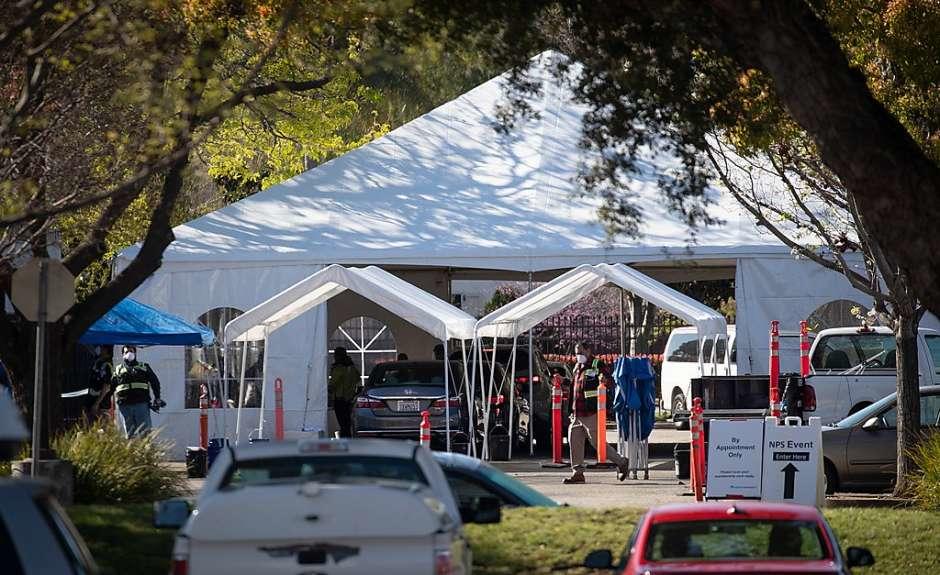Nearly Half Of All Patients At Bay Area Hospital Are Confirmed Or Suspected Coronavirus Cases
by Tyler Durden
ZeroHedge.com
Thu, 03/26/2020
Approximately half of the patients at a Kaiser Permanente hospital in San Jose, California are either confirmed or suspected coronavirus cases, according to a hospital vice president.

“Our San Jose facility in California actually has almost half of the hospital filled either with COVID-confirmed or persons under investigation,” Dr. Stephen Parodi told the Journal of American Medical Association (JAMA). “So we’ve literally had to revamp the hospital to make sure that we’ve got enough capacity from a personnel standpoint. Because to provide the care to these patients requires resource intensive personnel.”
Parodi, a Kaiser executive VP, is an infectious disease expert and national incident commander for the company’s COVID-19 response.
Santa Clara County is currently the hardest-hit area in the state in terms of fatalities, which currently stand at 17 – whole total case count is 459. There are 3,166 cases in California as of this writing. In terms of infected, Los Angeles County is the worst-hit, with 662 cases and 13 fatalities.
Based on Oakland, Kaiser has 12 million patients and 39 hospitals, as well as 706 medical offices across the US. They also operate in Oregon, Washington, Hawaii, Georgia, Washington D.C., Virginia, Maryland and Hawaii.
The Los Angeles Times has summarized the rest of Parodi’s interview (emphasis ours):
Younger adults also unable to breathe on their own
It’s not just the elderly who have deteriorated clinically, Parodi said; it’s also younger adults who are unable to breathe on their own and require being placed on a mechanical ventilator, in which a tube is placed into the throat of a patient so the machine can push oxygen directly into the lungs.
“I think the jury’s still out about who is actually going to end up being the cohort that ends up in the hospitals. We have people that are as young as in their 30s and 40s who have clinically deteriorated and required mechanical ventilation,” Parodi said.
“There is, of course, the other cohort, the older cohort, in their 80s and 70s that are also in our ICUs,” Parodi said.
Big increases in coronavirus positive tests in NorCal and Washington
Kaiser has been seeing significant increases in the number of patients confirmed positive in its hospitals, particularly in Washington state and Northern California. “Those appear to be the current hot spot,” Parodi said.
The number of calls Kaiser is receiving from patients complaining of cold-like symptoms has been rising dramatically. Typically, at this time of year, Kaiser gets about 4,000 calls daily complaining of cough and cold; on Friday, they were getting 14,000 to 15,000 calls a day.
And that comes as positive flu tests have been significantly dropping.
“That tells me we’ve got COVID circulating. I can’t tell you what percentage of those calls are actually COVID positive. But I can tell you that this is the most calls we’ve ever gotten, period, writ large, over the last 10 years that I’ve been following the data,” Parodi said.
An intensive care unit just for COVID patients
“Essentially we have filled one entire ICU just with COVID patients, which means that we have had to repurpose another unit to take care of the regular ICU patients as well,” Parodi said.
Of Kaiser’s two hospitals in Santa Clara County — San Jose and Santa Clara — “about a quarter of the patients are in the ICU relative to the others that are not,” Parodi said.
A two-week stay in the ICU
Once in the ICU, patients typically need somewhere between 10 to 14 days of mechanical ventilation, Parodi said.
“So this is a long-term proposition, in terms of vent days, ICU days and personnel days,” he said. “And I am concerned about planning for having enough ventilators — I’m talking about across the country — to be able to have this level of response.”
Preparing for a sudden surge in ICU patients
There can be a sudden increase in intensive care patients. “This thing can come on very quickly. So when you go from zero to having 10 patients — that happened for us … in the ICU within one week,” Parodi said. “So you’ve got to be prepared for that level of surge.”
Planning for running out of ventilators
That means planning for an unthinkable situation, where the hospital may have to choose who gets a ventilator and who doesn’t.
The experience in Italy suggests that the hospital would have to do mass triage, and determine “who are the best patients that need mechanical ventilation, who are the patients that may not benefit from it.”
The Rest…HERE

